5. Greed
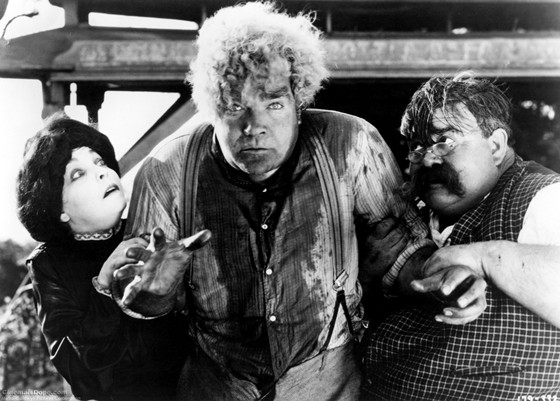
Another of Welles’ favourite films inevitably left an impact on his debut feature. Erich von Stroheim’s 1924 film not only invented many of the techniques Citizen Kane would popularise but also acted as a thematic counterpart to the story of Charles Foster Kane as well, with Stroheim referring to his own film as a Greek Tragedy in which environment and heredity dominated a character’s persona to the point where they metamorphosed into something entirely different than what they started as.
At the time Greed earned comparisons to the films of D.W Griffith but was additionally praised for shooting from many varying angles and sides, treating the film as a unique medium that could reach beyond that of three walls and an audience. Stroheim used sophisticated filming techniques such as deep-focus cinematography and montage editing that Citizen Kane would feature prominently.
The foregrounds and camera movements of Greed were meaningful not just on a technical level but also as a narrative tool to represent the development and emotions of the characters.
Greed’s lighting included high contrast, chiaroscuro techniques with pools or shafts of lights illuminating an otherwise dark space. Examples of this technique include the scene where McTeague begs Trina for money in a pool of moonlight and the merry-go-round scene in which characters alternate between appearing only as dark silhouettes and being fully lit.
Citizen Kane utilised very similar techniques with shadows being cast across rooms and in such high contrast black and white, it was always obvious. Like Greed, it also featured low angle shots of ceilings and while that sounds like a trivial similarity, the way each technique is used to advance the narrative is uncannily similar.
As well as that, like Citizen Kane would seventeen years later, Stroheim favoured the Soviet Montage theory and often used dramatic close ups as opposed to long takes.
It wasn’t just the techniques that Welles borrowed from Stroheim, he also appeared to adopt his work ethic as well. Labelled as a perfectionist, Stroheim shot more than 85 hours of footage and obsessed over accuracy during the filming. Like Welles, he demanded absolute control over the set and was known to oversee virtually every aspect of the creative process.
4. The Cabinet of Dr Caligari
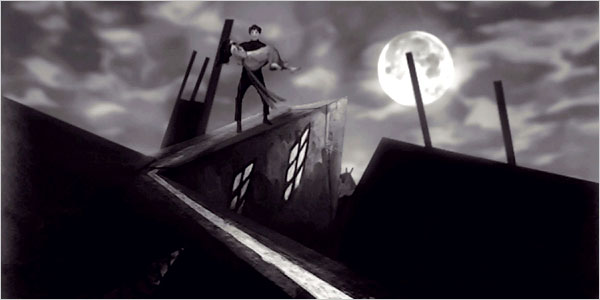
Citizen Kane’s use of gothic stylistics and expressionistic lighting was also unique for a Hollywood picture of its time. One can easily trace this back to some of Welles’ favourite films and one of those happens to be Robert Wiene’s 1920 expressionist horror The Cabinet of Dr Caligari. It tells the story of an insane hypnotist (Werner Krauss) who uses a somnambulist (Conrad Veidt) to commit murders.
Visually the film is dark, twisted and bizarre; radical and deliberate distortions in perspective, form, dimension and scale create a chaotic and unhinged appearance. It found a new mode of visual expression to convey emotions and art in a way that had never been seen before and influenced many famed directors and for the purposes of this list the most important influence it had was on first time director Welles.
When filming for Citizen Kane was about to go underway, Production advisor Miriam Geiger quickly compiled a handmade film textbook for Welles, a practical reference book of film techniques that he studied carefully. He then taught himself filmmaking by matching its visual vocabulary to The Cabinet of Dr Caligari, which he ordered from the Museum of Modern Art.
Characterised by its high concept sets that rendered the invisible visible once again by placing it all on screen from the jagged edges and sharp corners to the spiralling and tilted angles as well as its use of high contrast lighting, a close examination of the two will shed light on just how much Welles was inspired by the film. Wiene’s film included deliberately distorted forms to represent the internal state of his characters and Welles did much to replicate this.
While Citizen Kane does not feature any obvious expressionistic sets, Welles tilted his camera and altered their heights to turn sets and objects into expressions of inner emotion.
From a staircase becoming an endless, spiralling obsession as characters descend it to an entire room suddenly seeming closed in and claustrophobic as Kane’s political career disintegrates before his very eyes. Sometimes though even that wasn’t enough and Welles threw in a few shots of pure set expressionism.
The scene in which Kane walks in front of a mirror that represents the endless reflected abyss his life has become is a trick utilised brilliantly and undoubtedly owed itself in no small part to The Cabinet of Dr Calgari.
3. The Power and the Glory
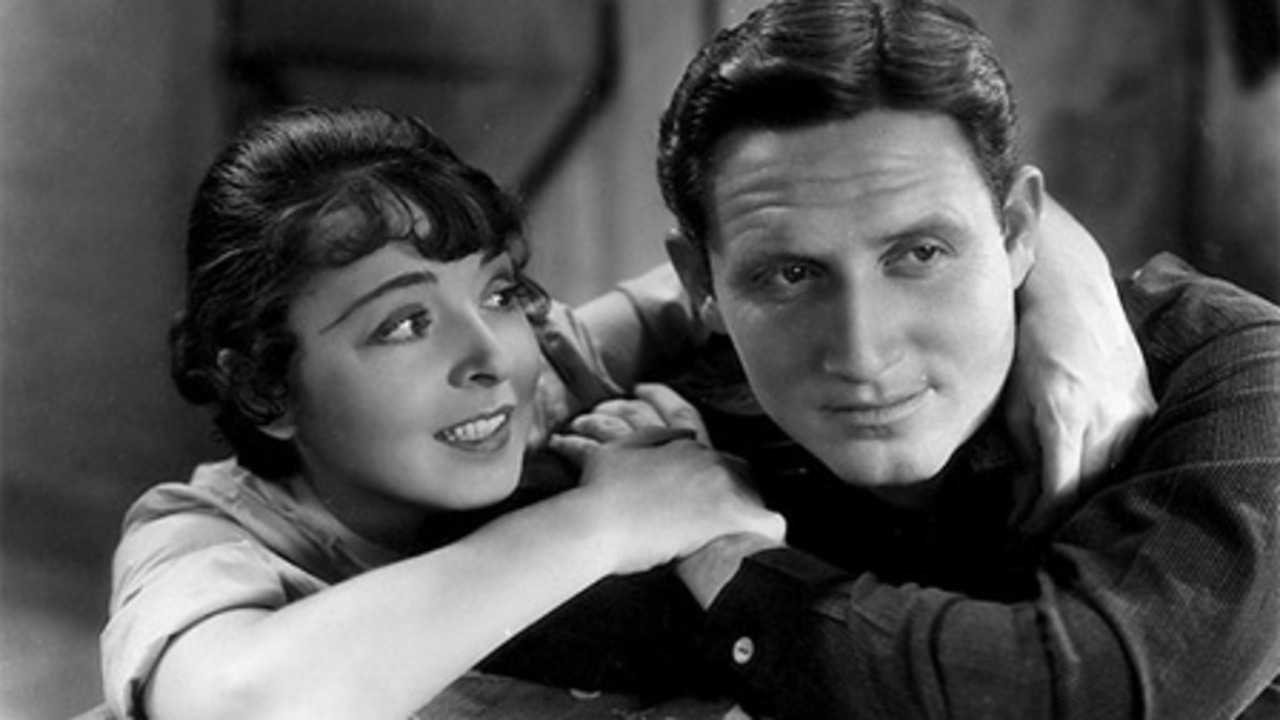
In her infamous Raising Kane that reviewed the controversy over the authorship of Citizen Kane, Pauline Kael cited The Power and the Glory as a prominent influence on the films narrative structure. Despite the fact that Kael’s was eventually discredited as being one-sided and unsupported by the facts, this single comparison stood apart as a sound and solid argument for multiple reasons.
At the time another aspect of Citizen Kane that was considered innovative was its nonlinear narrative structure, as it used flashbacks to transcend time based on the accounts of various people who knew its titular character in order to reveal each aspect of his life step by step. Imagine how surprised audiences must have been in 1941 when they sat down to watch a film starring Orson Welles as Charles Foster Kane only to watch that character die in the very first scene.
The only audience members who would not be surprised were those who had seen The Power and the Glory in 1933. Like Citizen Kane, the plot unfolds through the use of flashbacks and they are also utilised in almost the exact same way, reconstructing a character’s life upon his death that occurs early on within the film.
After the funeral service for Tom Garner (Spencer Tracy), a powerful and much-hated railroad tycoon who committed suicide, his best friend Henry (Ralph Morgan) recalls Garner’s life, his family problems, and his rise from track walker to president of the railroad.
This method of storytelling was unique at the time and even today it is still believed to be the first film to really employ the flashback technique as part of its narrative structure, the first motion picture in which narrative was used as a method of telling a dramatic story.
Although the film was well received by critics, and Spencer Tracy’s performance was especially praised, the film did not do well at the box office, except in New York City, where it maybe caught the attention of a young Broadway director?
Again this is pure speculation but there is no denying that The Power and the Glory was the earliest effort from Hollywood to utilise the dramatic power of the flashback and virtually everyone has been doing it since, including Orson Welles.
2. Intolerance
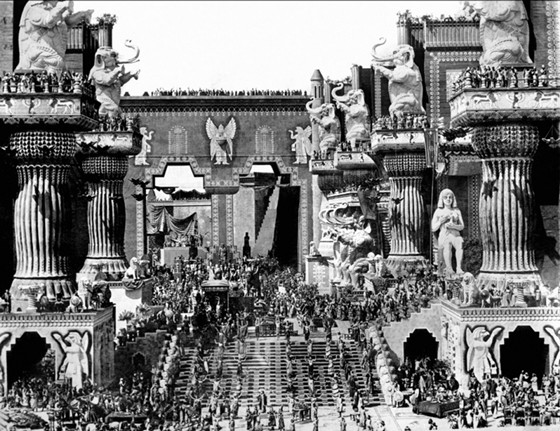
When D.W Griffth was asked about his thoughts concerning Citizen Kane, his response was an appropriate one. “I loved Citizen Kane and particularly loved the ideas he took from me.”
Not only were its early set designs strikingly similar to those of Intolerance, but Welles borrowed numerous techniques from Griffith’s film that despite being labelled a commercial disappointment at the time is now widely acknowledged as a masterpiece of the silent era and, as you may have guessed by now, has frequently been listed among Orson Welles’ favourite films.
The three and a half hour epic intercuts four parallel storylines, each separated by several centuries from a contemporary melodrama of crime and redemption, a story of Christ’s mission and death, the events surrounding the St Bartholomew massacre of 1572 and the fall of the Babylonian empire.
Each story was made distinct by its own unique colour palette and stylistics. This was possibly the broadest and most important technique Welles borrowed, the ability to transcend time and space purely through his directorial and stylistic touches.
Arguably Citizen Kane is defined by its ability to move across decades with simple editing techniques and its use of several varying narrators. At that time, films typically had an omniscient perspective, an illusion that everything being recounted on the screen is not only completely true and unbiased but is also a self-contained feature. Like Intolerance, Citizen Kane forgoes that perspective and adopts the viewpoint of several narrators in order to recount the life of Kane himself.
The fact that both films contain several moving parts and aspects has led both of them to be called film fugues. They do not follow any distinct chronological order and choose instead to jump backwards and forwards through time with multiple aspects of their stories being played out at the same time.
At the start of Citizen Kane, we are given a complete overview of his life and what proceeds is a more detailed depiction of each individual aspect with each aspect slowly being revealed simultaneously with each recount of Kane’s life.
That itself is another essential similarity. Intolerance and Citizen Kane both tell cross cutting, interconnected stories but they all revolve around a single theme. With Intolerance, it is the theme of love’s struggle across the ages (which was one of the film’s original subtitles). But with Kane, it is less a theme and more of a physical embodiment of one, the enigma that is Charles Foster Kane himself.
The only recount we never get is Kane himself, yet he remains the centre of everyone else’s stories and that is extremely significant as Charles Foster Kane is the embodiment of American ambition and if that sounds like an overestimation, then remember that the film’s original title was going to be simply, The American.
1. Stagecoach
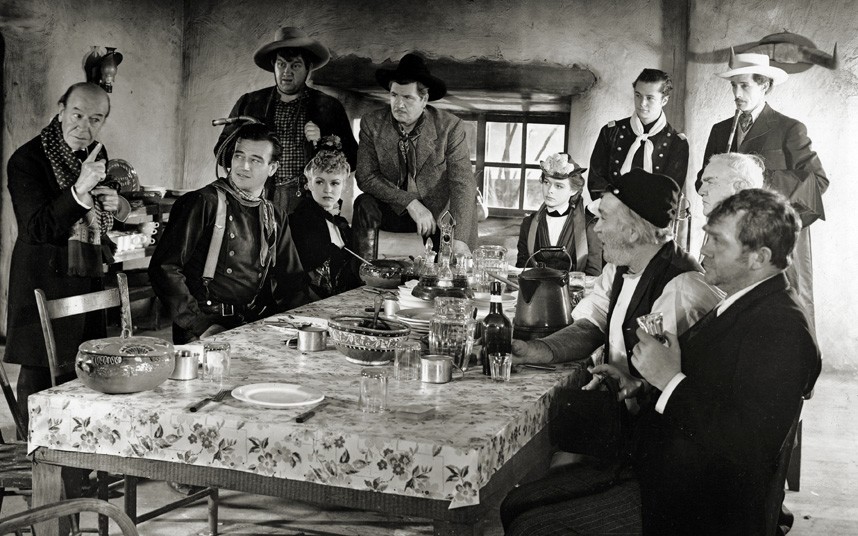
John Ford’s western classic is another film on this list that does not bear any obvious resemblance to Citizen Kane and unlike many others it has not been repeatedly acknowledged to have had a profound impact upon the film.
There is no technical aspect, thematic element or socially relevant theme that is lifted and inserted into Citizen Kane. The only person that really insists that Stagecoach had the biggest impact on the making of Citizen Kane is the person whose opinion on the subject matters more than anyone else, its star, writer and director Orson Welles.
The 1939 film was arguably Ford’s breakout hit that would send him on the way to being the director with more Academy Award wins than any other and one that is frequently labelled as one of the greatest and most influential directors of all time, especially by Orson Welles. During an interview on the 1960s, Welles was asked whom his favourite directors were and his response was “Well, I prefer the old masters by which I mean John Ford, John Ford and John Ford”.
Stagecoach was the only film that Welles genuinely studied in preparation for Citizen Kane, while he borrowed and watched multiple other films that have already been mentioned and no doubt borrowed their techniques, Stagecoach was the one that he sat down and watched repeatedly every day after filming. He reportedly watched it more than 40 times in just a month and claimed that it taught him everything he knew.
He stated that “As it turned out, the first day I ever walked onto a set was my first day as a director,” and so when he looked for inspiration, he turned to Ford which admittedly was an odd choice. Though it was an acclaimed film, Stagecoach was less than a year old by this point, and even though cinema itself was just over thirty years old there were still a few established classics that many others would have turned to instinctively.
But for whatever reason Welles was drawn to Stagecoach. “”I’d learned whatever I knew in the projection room—from Ford. After dinner every night for about a month, I’d run Stagecoach, often with some different technician or department head from the studio, and ask questions. ‘How was this done?’ ‘Why was this done?’ It was like going to school.”
That may be the biggest reason why Stagecoach influenced Citizen Kane more than any other film. It introduced Welles to the role of the director, the role to take the written word and translate it to screen by whatever means necessary.
Through lighting, set design, cinematography and staging, Ford taught Welles every creative decision was done with intent and purpose, to bring forth a new idea and introduce the audience to a new aspect of the film. It was a director’s job to make the audience see what he wanted them to see.
Welles would later describe Stagecoach as the perfect text book of filmmaking and the simple reason is that to him, it was. It taught to first time director the most basic fundamentals of filmmaking and that can never be understated for without those valuable lessons, it is a safe bet to say that what is so frequently hailed as the greatest film of all time could have been a very different affair indeed.
Author Bio: Joshua Price considers himself more of a fan that happens to write near insane ramblings on movies and directors like Scorsese, Spielberg, Bergman, Kubrick and Lumet rather than an actual critic and other insane ramblings can be found criticalfilmsuk.blogspot.co.uk.